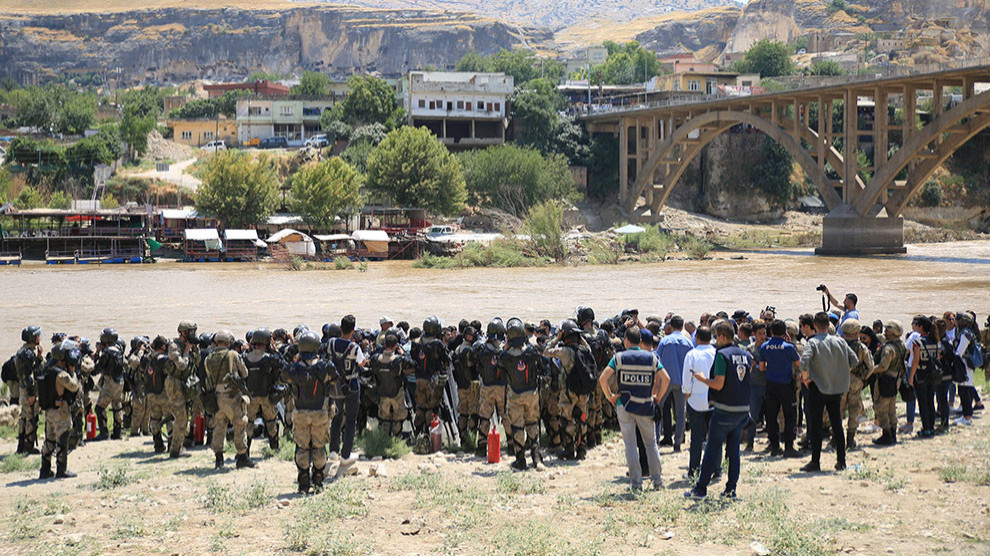Turkish Gendarmerie bans vigil for Hasankeyf
A vigil for the preservation of the historic Hasankeyf cultural site has been prevented by the Turkish Gendarmerie forces.
A vigil for the preservation of the historic Hasankeyf cultural site has been prevented by the Turkish Gendarmerie forces.

Last week, when it came out that the Turkish government had begun filling the controversial Ilısu Dam Reservoir on the Tigris River in the 12,000-year-old Hasankeyf cultural site in Batman province in northern Kurdistan, the Initiative to Keep Hasankeyf Alive and the Mesopotamia Ecology Movement called on all peoples and organizations to stand against this act of destruction. While neither the responsible state agency, the State Hydraulic Works (DSI), nor any other governmental institution made a statement on the filling of the dam reservoir, the DSI informally informed people on the ground that it was a ‘test filling’.

"It is crucial to show protest already at any and in particular this stage", said the statement released by the two associations which called for strong participation in a permanent vigil to be held in the ancient town.
Answering the call, activists from the Peoples’ Democratic Party (HDP) Youth Council arrived in Hasankeyf on Sunday for the vigil set to be held in the Tigris valley.

However, Turkish Gendarmerie forces had already cordoned off the Seyir Terası café adjacent to the dam reservoir and the river bank in the village of Kesmeköprü in the early morning hours. The vehicles of the HDP deputies Feleknas Uca, Ayşe Acar Başaran and Mehmet Rüştü Tiryaki were only meticulously searched before they were allowed to proceed on their way. The vehicles of the environmental activists were also subjected to a check.

A musical performance by artists of the Bahar Cultural Center was also obstructed and banned by the police and gendarmerie forces which threatened to attack if the group did not disperse, claiming that the demonstration was illegal.

Background
For 12.000 years, Hasankeyf has been a site of uninterrupted human settlement. With the labour of dozen cultures this outstanding universal site with its 5500 caves and hundreds of monuments has been created with an unique embedding into the Tigris valley.
Recent excavations show that Hasankeyf lays atop of a deep, uncovered cultural heritage and is the twin of Göbeklitepe, a sanctuary site 225 km to the west with a past of 12.000 years. Independent researchers state that Hasankeyf and the surrounding Tigris Valley fulfill 9 out of the 10 UNESCO criteria for a World Heritage Site.
The Ilisu Project was and is a completely wrong and destructive investment. That is why since the beginning the project was strongly opposed not only at the local level in Turkey, but also in Iraq, Syria and globally. Contrary to official claims, the dam would have no socio-economic or any other benefit for the vast majority of the mainly Kurdish society in the affected region. Up to 80.000 people would loose their livelihoods and end up in poverty.
The dam would contribute to the deepening of the assimilation of affected Kurds in the 199 villages and also Arabs from Hasankeyf town. The rich biodiversity of the Tigris River ecosystem – still mainly natural – would be degraded significantly.
The Ilisu Project would also gravely affect the downstream stretches of the Tigris, seriously jeopardizing the water supply of major Iraqi towns, and Iraqi agriculture would be put under serious risk, in particular the UNESCO site of Mesopotamian Marshes in southern Iraq would face reduced downstream flows.
RELATED NEWS: